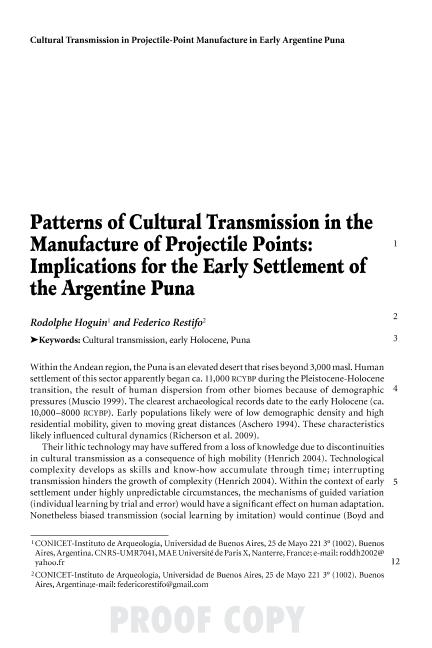Artículo
Patterns of Cultural Transmission in the Manufacture of Projectile Points: Implications for the Early Settlement of the Argentine Puna
Fecha de publicación:
02/2012
Editorial:
Texas University. Departament of anthropology. Center for the study of the first americans
Revista:
Current Research in the Pleistocene
ISSN:
8755-898X
e-ISSN:
8755-898X
Idioma:
Inglés
Tipo de recurso:
Artículo publicado
Clasificación temática:
Resumen
Within the Andean region, the Puna is an elevated desert that rises beyond 3,000 masl. Human settlement of this sector apparently began ca. 11,000 rcybp during the Pleistocene-Holocene transition, the result of human dispersion from other biomes. The clearest archaeological records date to the early Holocene (ca.10,000–8000 rcybp). Early populations likely were of low demographic density and high residential mobility, given to moving great distances. These characteristics likely influenced cultural dynamics.
Palabras clave:
First settlements
,
Argentine Puna
,
Cultural transmission
,
Lithic technology
Archivos asociados
Licencia
Identificadores
Colecciones
Articulos(SEDE CENTRAL)
Articulos de SEDE CENTRAL
Articulos de SEDE CENTRAL
Citación
Hoguin, Rodolphe Gregory; Restifo, Federico; Patterns of Cultural Transmission in the Manufacture of Projectile Points: Implications for the Early Settlement of the Argentine Puna; Texas University. Departament of anthropology. Center for the study of the first americans; Current Research in the Pleistocene; 2012; 2-2012; 73-77
Compartir




